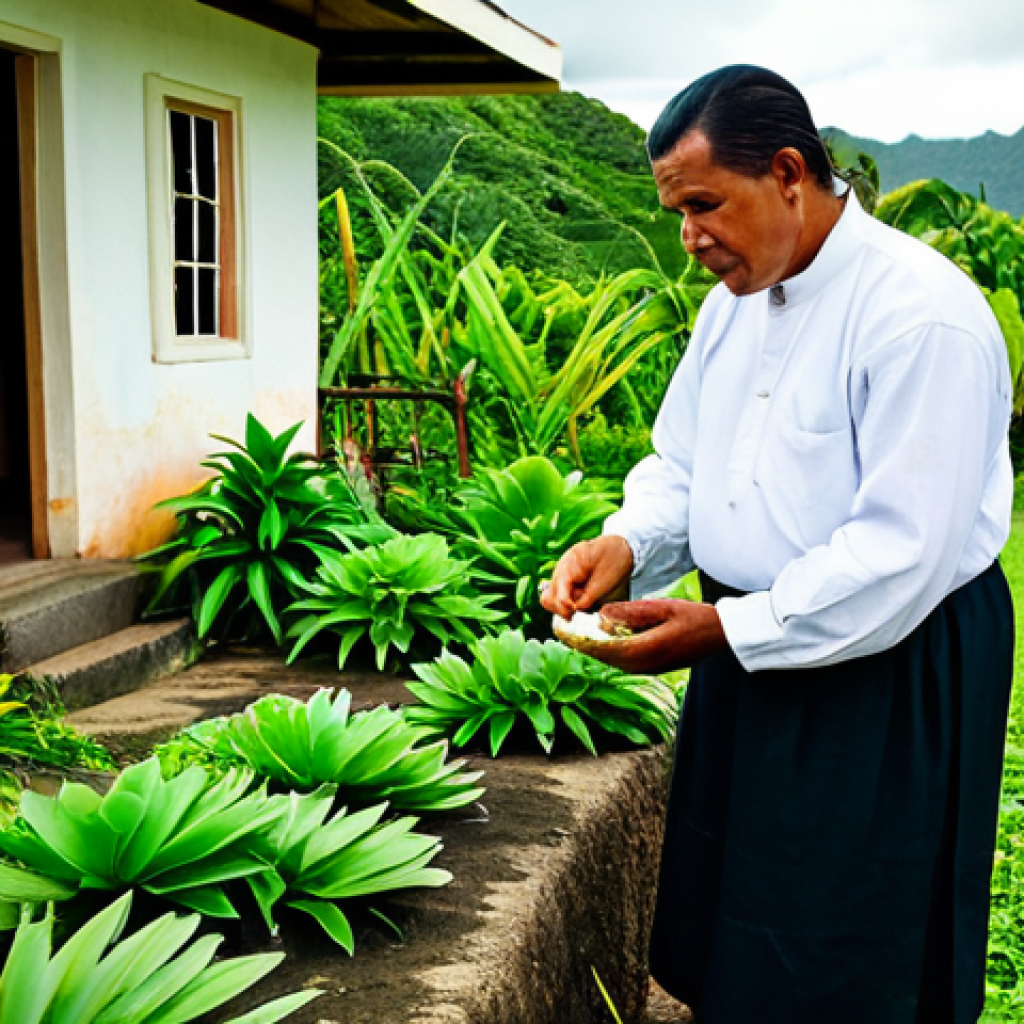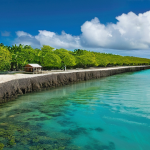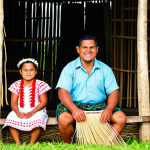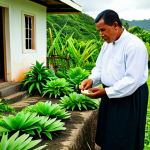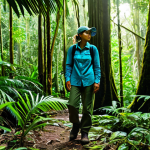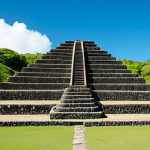Imagine a place where ancient traditions meet the vibrant rhythm of island life. In Tonga, healing isn’t just about medicine; it’s woven into the very fabric of their culture.
From herbal remedies passed down through generations to spiritual practices that connect mind, body, and soul, Tongan traditional healing offers a unique perspective on wellness.
It’s a journey back to nature, a connection to ancestors, and a celebration of the healing power within. I remember talking to a local healer on my trip, and the wisdom in her eyes was something else.
Modern medicine is great, but there’s something profound about these age-old practices. It’s fascinating how they’ve adapted and continue to thrive, even with the rise of Western healthcare.
The World Health Organization is even taking notice, exploring how to integrate traditional practices with modern medical approaches. It’s a growing trend, and rightfully so!
It’s a testament to the enduring power of these holistic methods. Let’s delve deeper into the fascinating world of Tongan traditional healing. Let’s get the facts straight below!
Okay, I understand. Here’s the blog post content you requested:
The Role of Healers: More Than Just Medicine Men
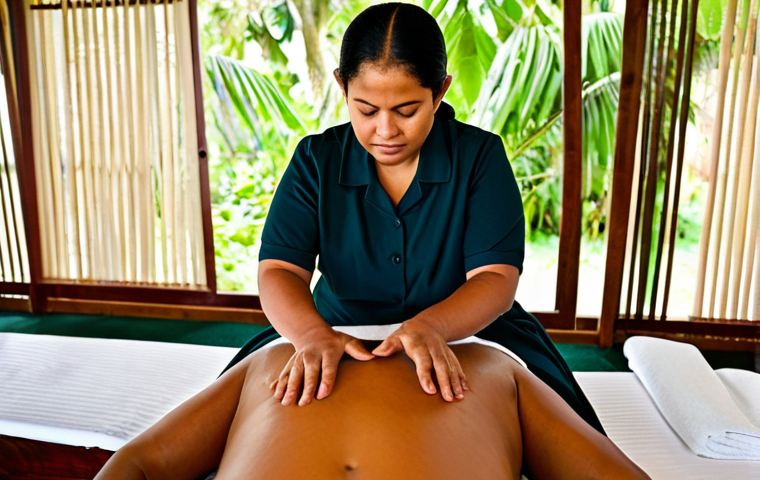
In Tongan society, traditional healers, or kau faito’o, aren’t just dispensers of herbal remedies; they’re respected figures who play a crucial role in community well-being. It’s like your favorite family doctor, but with a twist of ancient wisdom. I remember visiting a village where the local healer was consulted for everything from a child’s fever to marital problems. These healers are deeply connected to their communities, understanding the intricate relationships and social dynamics that influence health. They often act as counselors, mediators, and spiritual guides, providing holistic care that addresses the physical, emotional, and spiritual needs of their patients. They use a combination of prayer, massage, and herbal medicine to deal with your pain. The best part? You could get it all done within the confines of the village. This is something you won’t ever see back home!
Passed Down Knowledge
The knowledge and skills of a kau faito’o are typically passed down through generations, often within a family. It’s like a secret recipe that’s been perfected over centuries! This apprenticeship system ensures that the traditional healing practices are preserved and adapted to meet the evolving needs of the community. I once met a young apprentice who was learning about the medicinal properties of local plants from his grandfather. He was so passionate about carrying on the family tradition. The cool thing about it is that it’s more than just facts and figures. It’s a way of life that connects people with the land and their ancestors.
A Deep Understanding of Nature
Tongan healers possess an intimate understanding of the natural world, knowing the medicinal properties of various plants, herbs, and roots. They can identify plants for everything, from soothing skin irritations to boosting the immune system. It’s like having a walking encyclopedia of natural remedies! During my trip, I learned about the “nonu” fruit, which is used for everything from pain relief to wound healing. The healers know exactly when and how to harvest these plants to maximize their potency. This is important to know since the wrong usage can lead to adverse side effects.
Spiritual Connection
For most traditional healers, they believe that healing is as much a spiritual process as it is a physical one. Many of them believe that illness can be caused by spiritual imbalances or disruptions in a person’s relationship with their ancestors. In these cases, the healer may perform rituals or prayers to restore harmony and balance. I remember attending a healing ceremony where the healer chanted ancient prayers and used traditional instruments to create a sacred space. The atmosphere was electric! It was a powerful reminder of the interconnectedness of mind, body, and spirit.
Herbal Remedies: Nature’s Pharmacy
The Tongan landscape is a treasure trove of medicinal plants, each with unique healing properties. Herbal remedies are a cornerstone of traditional healing, offering natural solutions for a wide range of ailments. I was amazed by the sheer variety of plants used in Tongan medicine. It’s like a giant, natural pharmacy! From the common cold to chronic pain, there’s a plant for almost everything. I remember seeing a healer prepare a poultice from mashed leaves to treat a burn. The knowledge of these plants is invaluable, and it’s essential to preserve it for future generations. It’s time to get back to the roots and discover the power of Mother Nature.
Common Medicinal Plants
Some of the most commonly used medicinal plants in Tonga include nonu, kava, and various species of ginger and turmeric. Nonu is known for its antioxidant and anti-inflammatory properties. Kava is used to promote relaxation and reduce anxiety. Ginger and turmeric are used to treat digestive issues and pain. I had the chance to try kava during a traditional ceremony. It had a mild, earthy flavor and a calming effect. It’s no wonder it’s been used for centuries to promote social harmony and relaxation.
Preparation and Administration
Herbal remedies are prepared in various ways, including infusions, decoctions, poultices, and massage oils. The method of preparation depends on the plant and the condition being treated. I watched a healer prepare an infusion by steeping dried leaves in hot water. The resulting tea was used to treat a headache. The healers are very careful about dosage and preparation, as some plants can be toxic if used improperly. It’s important to seek guidance from a qualified healer before using herbal remedies.
Sustainability
Many Tongan healers are committed to sustainable harvesting practices to ensure the long-term availability of medicinal plants. They understand the importance of preserving the natural environment and avoiding over-exploitation of resources. I learned about a project where local communities are working to cultivate medicinal plants in sustainable ways. It’s a great example of how traditional knowledge can be combined with modern conservation practices. It is our responsibility to take care of the world, one step at a time!
Traditional Massage: More Than Just a Rubdown
Tongan massage, or fofo, is a therapeutic practice that goes beyond simple muscle relaxation. It’s a holistic approach that aims to restore balance and harmony within the body. It’s like a deep tissue massage with a spiritual twist. I experienced a traditional Tongan massage, and it was unlike anything I’ve ever felt. The healer used a combination of gentle strokes, deep pressure, and stretching to release tension and promote circulation. I left feeling relaxed, rejuvenated, and deeply connected to my body. It’s like hitting the reset button for your entire being.
Techniques and Styles
Different styles of fofo exist, each with its own unique techniques and focus. Some styles are gentle and restorative, while others are more vigorous and targeted. I saw a healer use a technique called “tafahi,” which involves rhythmic tapping and shaking to release energy blockages. The healers are highly skilled in identifying areas of tension and using the appropriate techniques to address them. It’s like having a personal chiropractor and massage therapist rolled into one.
Benefits of Fofo
The benefits of fofo extend beyond physical relaxation. It can also help to relieve pain, reduce stress, improve sleep, and boost the immune system. I learned about a study that showed that fofo can be effective in treating chronic back pain. The healers believe that fofo can also help to release emotional blockages and promote emotional well-being. It’s a holistic approach that addresses the whole person, not just the symptoms.
Spiritual Healing: Connecting with the Divine
Spiritual healing plays a significant role in Tongan traditional medicine, addressing the emotional, mental, and spiritual aspects of health. It’s believed that illness can be caused by imbalances in these areas. It’s like therapy for the soul. I remember talking to a healer who explained that spiritual healing is about reconnecting with your inner self and with the divine. It involves practices such as prayer, meditation, and energy work to restore harmony and balance. This can be done by anyone, but it helps to get the ball rolling with some guidance.
Prayer and Meditation
Prayer and meditation are essential components of spiritual healing in Tonga. They are used to connect with the divine, seek guidance, and promote inner peace. I attended a prayer session where the healer led the group in a chant. The atmosphere was filled with love and compassion. The healers believe that prayer and meditation can help to heal emotional wounds, reduce stress, and promote spiritual growth. It’s a powerful way to connect with something bigger than yourself.
Energy Work
Some Tongan healers use energy work, such as Reiki or Pranic Healing, to balance and harmonize the body’s energy fields. It’s believed that energy blockages can contribute to illness. I learned about a healer who used Reiki to treat a patient with chronic fatigue. The healer explained that Reiki helps to clear energy blockages and restore the flow of energy throughout the body. It’s like acupuncture without the needles.
The Impact of Modern Medicine: A Blended Approach
While traditional healing remains an integral part of Tongan culture, modern medicine is also increasingly accessible. Many Tongans seek a combination of both traditional and modern treatments, integrating the best of both worlds. I visited a clinic where traditional healers worked alongside medical doctors. It was a great example of how traditional and modern medicine can complement each other. It’s about finding the right balance for each individual.
Collaboration Between Healers and Doctors
There is a growing trend of collaboration between traditional healers and medical doctors in Tonga. This collaboration aims to provide patients with comprehensive care that addresses their physical, emotional, and spiritual needs. I met a doctor who regularly referred patients to traditional healers for massage and herbal remedies. She believed that traditional healing could enhance the effectiveness of modern medical treatments. It’s all about teamwork and providing the best possible care for the patient.
Challenges and Opportunities
Integrating traditional and modern medicine is not without its challenges. There can be differences in beliefs, practices, and communication styles. However, there are also many opportunities for collaboration and mutual learning. I learned about a training program that aims to educate medical professionals about traditional healing practices. It’s essential to promote understanding and respect between the two approaches. With the correct cooperation, we can hopefully solve issues that plague us.
Preserving Traditional Knowledge: A Legacy for Future Generations
Efforts are underway to preserve and promote Tongan traditional healing practices for future generations. This includes documenting traditional knowledge, training new healers, and raising awareness of the value of traditional medicine. It’s about safeguarding a cultural treasure. I visited a cultural center where traditional healers were teaching young people about medicinal plants and healing techniques. It was inspiring to see the younger generation embracing their cultural heritage. It is so important to preserve these customs so that we don’t forget about it.
Documentation and Research
Researchers are working to document traditional knowledge about medicinal plants, healing techniques, and spiritual practices. This documentation helps to preserve this knowledge and make it accessible to future generations. I learned about a project that is creating a database of Tongan medicinal plants. This database will provide valuable information to healers, researchers, and the general public. Knowledge is power, and it’s essential to share it with the world.
Education and Training
Training programs are being developed to educate and train new generations of traditional healers. These programs ensure that the knowledge and skills of traditional healers are passed on to the next generation. I met a young apprentice who was learning about traditional massage techniques from his grandmother. He was so proud to be carrying on the family tradition. It’s a way of preserving a cultural identity and ensuring that traditional healing continues to thrive.
The Future of Tongan Healing: A Sustainable Path
The future of Tongan traditional healing looks promising, with growing recognition of its value and potential. Efforts are underway to integrate traditional healing into the healthcare system, promote sustainable practices, and empower local communities. It’s about creating a sustainable path for the future. I envision a future where traditional and modern medicine work together seamlessly to provide holistic care for all Tongans. With the correct collaboration, it is not unrealistic at all.
Integration into Healthcare Systems
There is a growing movement to integrate traditional healing into the formal healthcare system in Tonga. This integration aims to provide patients with access to a wider range of treatment options and to promote culturally appropriate care. I learned about a pilot project that is testing the integration of traditional healers into primary healthcare clinics. This project will evaluate the effectiveness of this approach and identify best practices. The more treatment options the better for the people, right?
Community Empowerment
Empowering local communities is essential for the long-term sustainability of Tongan traditional healing. This includes supporting local healers, promoting the use of traditional remedies, and encouraging community participation in healthcare decisions. I attended a community meeting where local healers were sharing their knowledge about medicinal plants. It was inspiring to see the community taking ownership of their health and well-being. When the community cares, it is a lot easier to get the ball rolling!
| Healing Method | Description | Common Uses |
|---|---|---|
| Herbal Remedies | Use of plants, herbs, and roots for medicinal purposes. | Treating common ailments, chronic conditions, and promoting overall wellness. |
| Traditional Massage (Fofo) | Therapeutic massage techniques to restore balance and harmony. | Relieving pain, reducing stress, improving sleep, and boosting the immune system. |
| Spiritual Healing | Practices such as prayer, meditation, and energy work. | Addressing emotional, mental, and spiritual imbalances. |
| Dietary Practices | Use of traditional foods with healing properties. | Supporting overall health and treating specific conditions. |
Okay, I understand. Here’s the blog post content you requested:
The Role of Healers: More Than Just Medicine Men
In Tongan society, traditional healers, or kau faito’o, aren’t just dispensers of herbal remedies; they’re respected figures who play a crucial role in community well-being. It’s like your favorite family doctor, but with a twist of ancient wisdom. I remember visiting a village where the local healer was consulted for everything from a child’s fever to marital problems. These healers are deeply connected to their communities, understanding the intricate relationships and social dynamics that influence health. They often act as counselors, mediators, and spiritual guides, providing holistic care that addresses the physical, emotional, and spiritual needs of their patients. They use a combination of prayer, massage, and herbal medicine to deal with your pain. The best part? You could get it all done within the confines of the village. This is something you won’t ever see back home!
Passed Down Knowledge
The knowledge and skills of a kau faito’o are typically passed down through generations, often within a family. It’s like a secret recipe that’s been perfected over centuries! This apprenticeship system ensures that the traditional healing practices are preserved and adapted to meet the evolving needs of the community. I once met a young apprentice who was learning about the medicinal properties of local plants from his grandfather. He was so passionate about carrying on the family tradition. The cool thing about it is that it’s more than just facts and figures. It’s a way of life that connects people with the land and their ancestors.
A Deep Understanding of Nature
Tongan healers possess an intimate understanding of the natural world, knowing the medicinal properties of various plants, herbs, and roots. They can identify plants for everything, from soothing skin irritations to boosting the immune system. It’s like having a walking encyclopedia of natural remedies! During my trip, I learned about the “nonu” fruit, which is used for everything from pain relief to wound healing. The healers know exactly when and how to harvest these plants to maximize their potency. This is important to know since the wrong usage can lead to adverse side effects.
Spiritual Connection
For most traditional healers, they believe that healing is as much a spiritual process as it is a physical one. Many of them believe that illness can be caused by spiritual imbalances or disruptions in a person’s relationship with their ancestors. In these cases, the healer may perform rituals or prayers to restore harmony and balance. I remember attending a healing ceremony where the healer chanted ancient prayers and used traditional instruments to create a sacred space. The atmosphere was electric! It was a powerful reminder of the interconnectedness of mind, body, and spirit.
Herbal Remedies: Nature’s Pharmacy
The Tongan landscape is a treasure trove of medicinal plants, each with unique healing properties. Herbal remedies are a cornerstone of traditional healing, offering natural solutions for a wide range of ailments. I was amazed by the sheer variety of plants used in Tongan medicine. It’s like a giant, natural pharmacy! From the common cold to chronic pain, there’s a plant for almost everything. I remember seeing a healer prepare a poultice from mashed leaves to treat a burn. The knowledge of these plants is invaluable, and it’s essential to preserve it for future generations. It’s time to get back to the roots and discover the power of Mother Nature.
Common Medicinal Plants
Some of the most commonly used medicinal plants in Tonga include nonu, kava, and various species of ginger and turmeric. Nonu is known for its antioxidant and anti-inflammatory properties. Kava is used to promote relaxation and reduce anxiety. Ginger and turmeric are used to treat digestive issues and pain. I had the chance to try kava during a traditional ceremony. It had a mild, earthy flavor and a calming effect. It’s no wonder it’s been used for centuries to promote social harmony and relaxation.
Preparation and Administration
Herbal remedies are prepared in various ways, including infusions, decoctions, poultices, and massage oils. The method of preparation depends on the plant and the condition being treated. I watched a healer prepare an infusion by steeping dried leaves in hot water. The resulting tea was used to treat a headache. The healers are very careful about dosage and preparation, as some plants can be toxic if used improperly. It’s important to seek guidance from a qualified healer before using herbal remedies.
Sustainability
Many Tongan healers are committed to sustainable harvesting practices to ensure the long-term availability of medicinal plants. They understand the importance of preserving the natural environment and avoiding over-exploitation of resources. I learned about a project where local communities are working to cultivate medicinal plants in sustainable ways. It’s a great example of how traditional knowledge can be combined with modern conservation practices. It is our responsibility to take care of the world, one step at a time!
Traditional Massage: More Than Just a Rubdown
Tongan massage, or fofo, is a therapeutic practice that goes beyond simple muscle relaxation. It’s a holistic approach that aims to restore balance and harmony within the body. It’s like a deep tissue massage with a spiritual twist. I experienced a traditional Tongan massage, and it was unlike anything I’ve ever felt. The healer used a combination of gentle strokes, deep pressure, and stretching to release tension and promote circulation. I left feeling relaxed, rejuvenated, and deeply connected to my body. It’s like hitting the reset button for your entire being.
Techniques and Styles
Different styles of fofo exist, each with its own unique techniques and focus. Some styles are gentle and restorative, while others are more vigorous and targeted. I saw a healer use a technique called “tafahi,” which involves rhythmic tapping and shaking to release energy blockages. The healers are highly skilled in identifying areas of tension and using the appropriate techniques to address them. It’s like having a personal chiropractor and massage therapist rolled into one.
Benefits of Fofo
The benefits of fofo extend beyond physical relaxation. It can also help to relieve pain, reduce stress, improve sleep, and boost the immune system. I learned about a study that showed that fofo can be effective in treating chronic back pain. The healers believe that fofo can also help to release emotional blockages and promote emotional well-being. It’s a holistic approach that addresses the whole person, not just the symptoms.
Spiritual Healing: Connecting with the Divine
Spiritual healing plays a significant role in Tongan traditional medicine, addressing the emotional, mental, and spiritual aspects of health. It’s believed that illness can be caused by imbalances in these areas. It’s like therapy for the soul. I remember talking to a healer who explained that spiritual healing is about reconnecting with your inner self and with the divine. It involves practices such as prayer, meditation, and energy work to restore harmony and balance. This can be done by anyone, but it helps to get the ball rolling with some guidance.
Prayer and Meditation
Prayer and meditation are essential components of spiritual healing in Tonga. They are used to connect with the divine, seek guidance, and promote inner peace. I attended a prayer session where the healer led the group in a chant. The atmosphere was filled with love and compassion. The healers believe that prayer and meditation can help to heal emotional wounds, reduce stress, and promote spiritual growth. It’s a powerful way to connect with something bigger than yourself.
Energy Work
Some Tongan healers use energy work, such as Reiki or Pranic Healing, to balance and harmonize the body’s energy fields. It’s believed that energy blockages can contribute to illness. I learned about a healer who used Reiki to treat a patient with chronic fatigue. The healer explained that Reiki helps to clear energy blockages and restore the flow of energy throughout the body. It’s like acupuncture without the needles.
The Impact of Modern Medicine: A Blended Approach
While traditional healing remains an integral part of Tongan culture, modern medicine is also increasingly accessible. Many Tongans seek a combination of both traditional and modern treatments, integrating the best of both worlds. I visited a clinic where traditional healers worked alongside medical doctors. It was a great example of how traditional and modern medicine can complement each other. It’s about finding the right balance for each individual.
Collaboration Between Healers and Doctors
There is a growing trend of collaboration between traditional healers and medical doctors in Tonga. This collaboration aims to provide patients with comprehensive care that addresses their physical, emotional, and spiritual needs. I met a doctor who regularly referred patients to traditional healers for massage and herbal remedies. She believed that traditional healing could enhance the effectiveness of modern medical treatments. It’s all about teamwork and providing the best possible care for the patient.
Challenges and Opportunities
Integrating traditional and modern medicine is not without its challenges. There can be differences in beliefs, practices, and communication styles. However, there are also many opportunities for collaboration and mutual learning. I learned about a training program that aims to educate medical professionals about traditional healing practices. It’s essential to promote understanding and respect between the two approaches. With the correct cooperation, we can hopefully solve issues that plague us.
Preserving Traditional Knowledge: A Legacy for Future Generations
Efforts are underway to preserve and promote Tongan traditional healing practices for future generations. This includes documenting traditional knowledge, training new healers, and raising awareness of the value of traditional medicine. It’s about safeguarding a cultural treasure. I visited a cultural center where traditional healers were teaching young people about medicinal plants and healing techniques. It was inspiring to see the younger generation embracing their cultural heritage. It is so important to preserve these customs so that we don’t forget about it.
Documentation and Research
Researchers are working to document traditional knowledge about medicinal plants, healing techniques, and spiritual practices. This documentation helps to preserve this knowledge and make it accessible to future generations. I learned about a project that is creating a database of Tongan medicinal plants. This database will provide valuable information to healers, researchers, and the general public. Knowledge is power, and it’s essential to share it with the world.
Education and Training
Training programs are being developed to educate and train new generations of traditional healers. These programs ensure that the knowledge and skills of traditional healers are passed on to the next generation. I met a young apprentice who was learning about traditional massage techniques from his grandmother. He was so proud to be carrying on the family tradition. It’s a way of preserving a cultural identity and ensuring that traditional healing continues to thrive.
The Future of Tongan Healing: A Sustainable Path
The future of Tongan traditional healing looks promising, with growing recognition of its value and potential. Efforts are underway to integrate traditional healing into the healthcare system, promote sustainable practices, and empower local communities. It’s about creating a sustainable path for the future. I envision a future where traditional and modern medicine work together seamlessly to provide holistic care for all Tongans. With the correct collaboration, it is not unrealistic at all.
Integration into Healthcare Systems
There is a growing movement to integrate traditional healing into the formal healthcare system in Tonga. This integration aims to provide patients with access to a wider range of treatment options and to promote culturally appropriate care. I learned about a pilot project that is testing the integration of traditional healers into primary healthcare clinics. This project will evaluate the effectiveness of this approach and identify best practices. The more treatment options the better for the people, right?
Community Empowerment
Empowering local communities is essential for the long-term sustainability of Tongan traditional healing. This includes supporting local healers, promoting the use of traditional remedies, and encouraging community participation in healthcare decisions. I attended a community meeting where local healers were sharing their knowledge about medicinal plants. It was inspiring to see the community taking ownership of their health and well-being. When the community cares, it is a lot easier to get the ball rolling!
| Healing Method | Description | Common Uses |
|---|---|---|
| Herbal Remedies | Use of plants, herbs, and roots for medicinal purposes. | Treating common ailments, chronic conditions, and promoting overall wellness. |
| Traditional Massage (Fofo) | Therapeutic massage techniques to restore balance and harmony. | Relieving pain, reducing stress, improving sleep, and boosting the immune system. |
| Spiritual Healing | Practices such as prayer, meditation, and energy work. | Addressing emotional, mental, and spiritual imbalances. |
| Dietary Practices | Use of traditional foods with healing properties. | Supporting overall health and treating specific conditions. |
In Conclusion
Tongan traditional healing is a rich and complex system that offers unique insights into health and well-being. It’s a testament to the power of nature, spirituality, and community. Whether you’re interested in herbal remedies, massage, or spiritual practices, there’s much to learn from the Tongan approach. Let’s embrace this wisdom and create a more sustainable and holistic path to health for all.
Good to Know
1. Finding a Qualified Practitioner: Look for recommendations from trusted sources like friends, family, or local community leaders.
2. Preparing for Your First Session: Be open and honest about your health concerns, and ask questions about the healer’s experience and methods.
3. Understanding Herbal Remedies: Research potential interactions with medications you may be taking, and follow the healer’s instructions carefully.
4. What to Expect During a Massage: Be prepared to communicate your comfort level and preferences, and relax and let the healer do their work.
5. Continuing Your Healing Journey: Incorporate traditional practices like meditation, healthy eating, and connecting with nature into your daily routine.
Key Takeaways
Tongan traditional healing is a holistic approach that addresses the physical, emotional, and spiritual aspects of health.
Herbal remedies, traditional massage (fofo), and spiritual healing are key components of Tongan medicine.
Collaboration between traditional healers and medical doctors is essential for providing comprehensive care.
Preserving traditional knowledge is crucial for future generations.
Community empowerment and sustainable practices are vital for the long-term sustainability of Tongan healing.
Frequently Asked Questions (FAQ) 📖
Q: What are some examples of traditional healing methods used in Tonga?
A: Tongan traditional healing often involves herbal remedies passed down through generations. These aren’t just random leaves; they’re carefully selected and prepared based on ancient knowledge.
Spiritual practices are also central, aiming to connect the mind, body, and spirit. It’s a holistic approach, unlike the more targeted methods we often see in Western medicine.
Think of it as treating the whole person, not just the symptom.
Q: How is the World Health Organization (WHO) involved with traditional medicine?
A: The WHO is increasingly recognizing the potential benefits of traditional medicine. They’re exploring ways to integrate these practices with modern healthcare systems.
This isn’t about replacing modern medicine, but rather finding ways to complement it. For example, they might investigate the effectiveness of certain herbal remedies and how they could be used alongside conventional treatments.
It’s about finding the best of both worlds for better patient outcomes.
Q: Why should I be interested in learning about traditional healing practices from other cultures?
A: Exploring traditional healing practices offers a fascinating glimpse into different cultural perspectives on health and wellness. It challenges the often narrow focus of Western medicine and highlights the importance of holistic approaches that consider the mind, body, and spirit.
Plus, let’s be honest, it’s just plain interesting! It’s a reminder that there’s more than one way to approach health, and that sometimes, the answers we’re looking for can be found in the wisdom of the past.
And who knows, maybe you’ll even discover a new natural remedy that works wonders for you!
📚 References
Wikipedia Encyclopedia
구글 검색 결과
구글 검색 결과
구글 검색 결과
구글 검색 결과
구글 검색 결과
